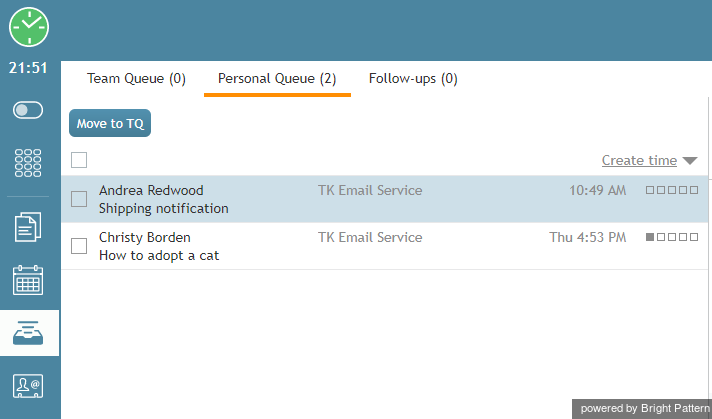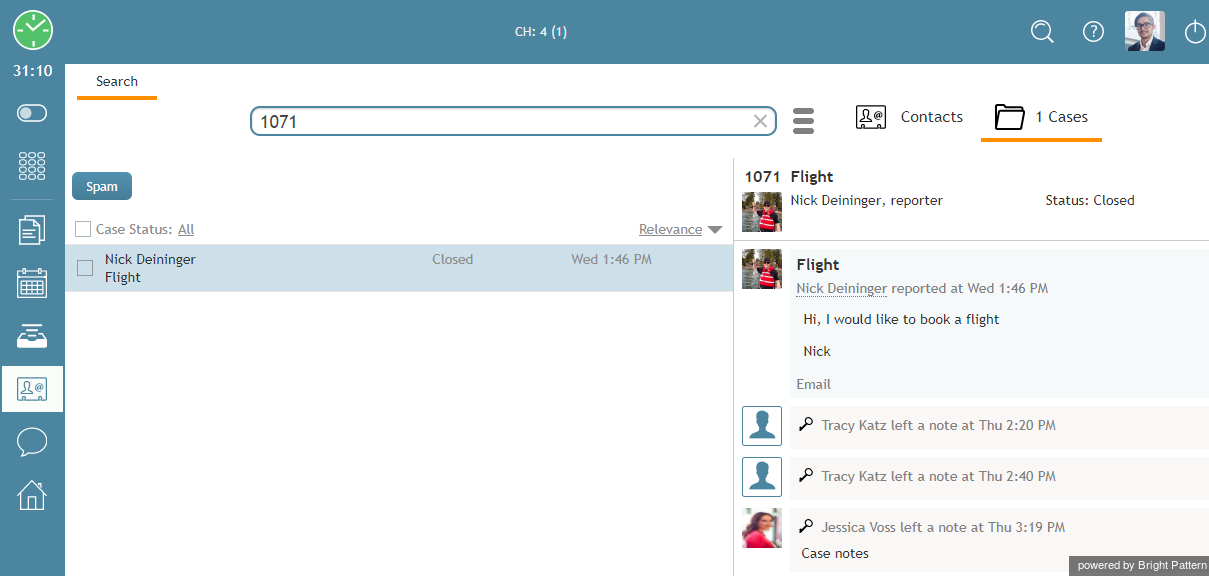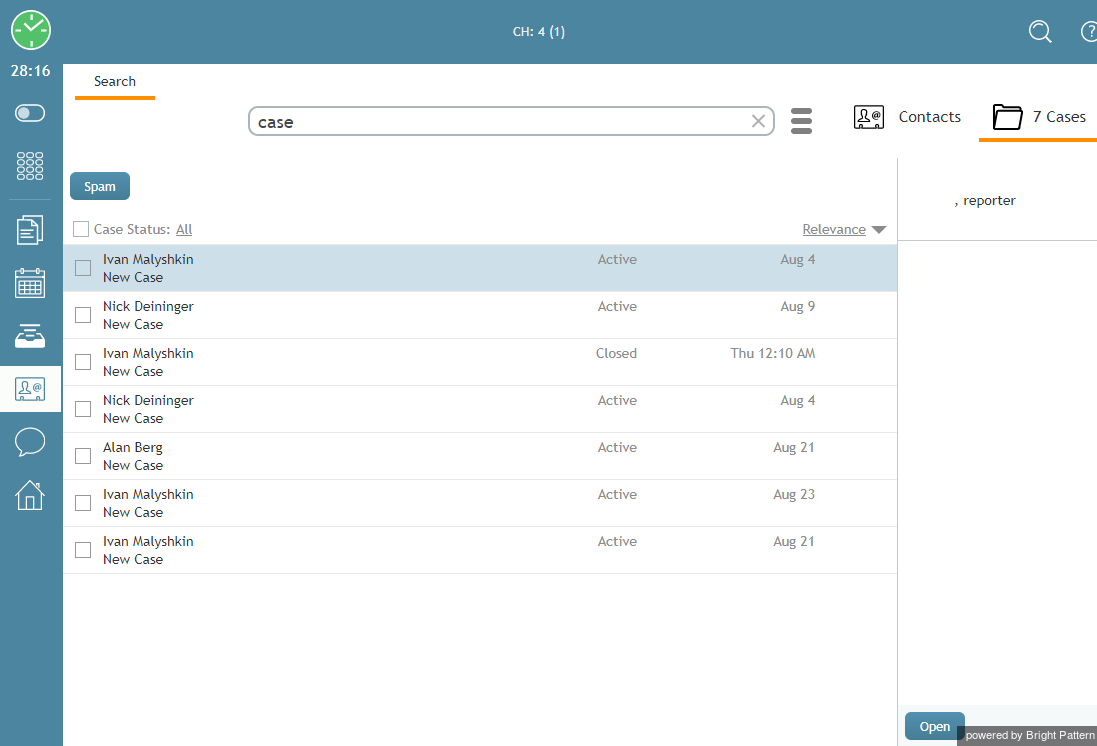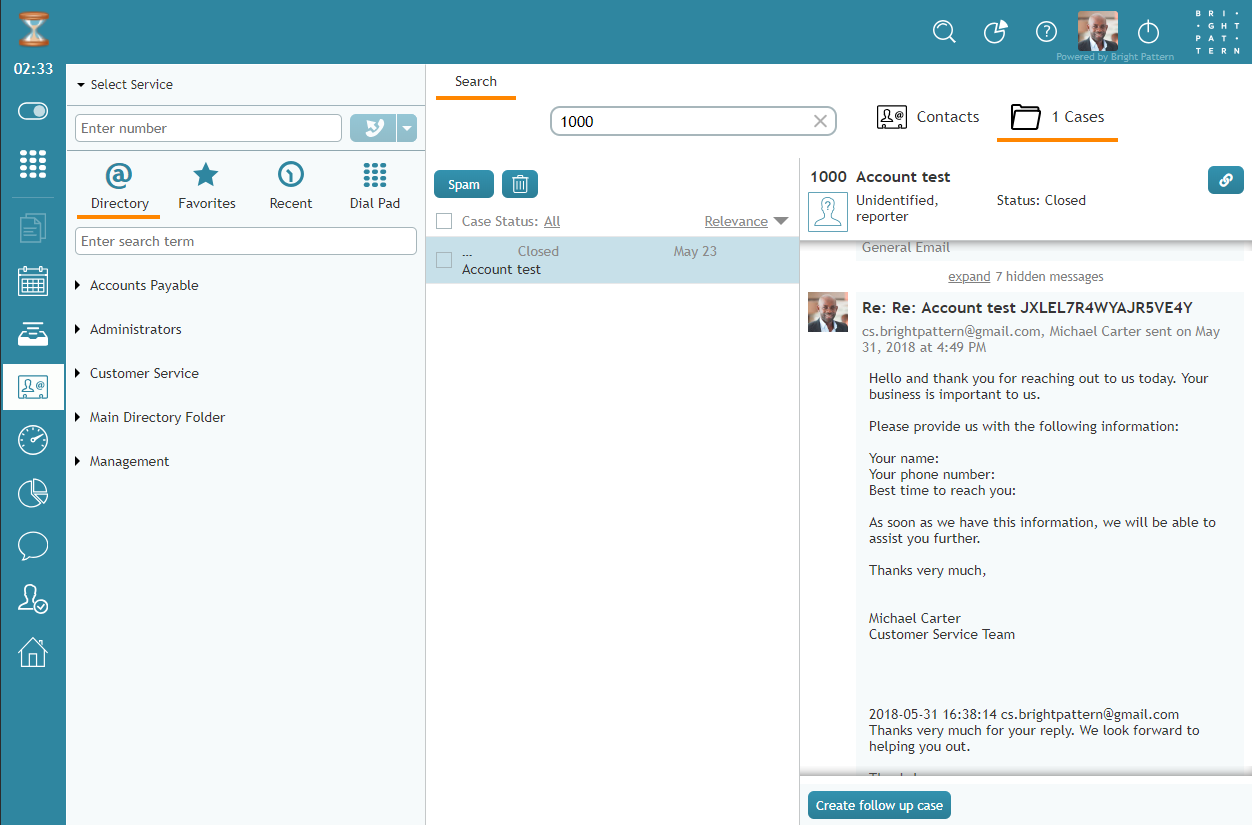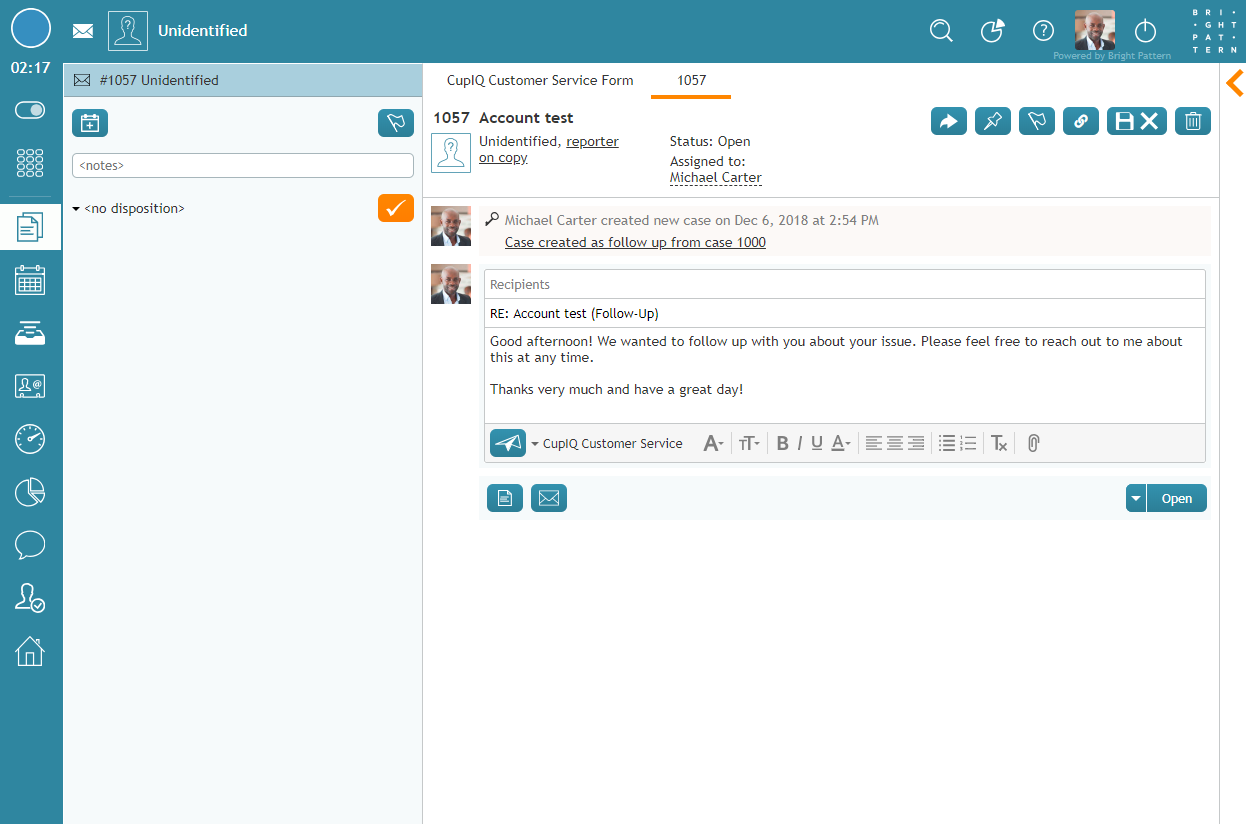(Created page with "または、次を入力してケースを検索することもできます。: * "ケース"という単語 * ケース番号 * お客様名 * 件名のフラグメント *...") |
(Created page with "=== ステップ 3: ケースを参照・並べ替え・選択します。 === ケースごとに、番号、作成日、元のメールの件名が表示されます。長さ...") |
||
| Line 33: | Line 33: | ||
| − | === | + | === ステップ 3: ケースを参照・並べ替え・選択します。 === |
| − | + | ケースごとに、番号、作成日、元のメールの件名が表示されます。長さによっては、件名はリストビューで収まりきらずに表示される場合があります。収まりきらない件名にカーソルを合わせると、件名全体が表示されます。検索条件に一致するケースが一覧表示されます。 | |
Depending on your permissions, you will be able to see either the cases that you have previously worked on, or all cases for the services that you are qualified to handle. | Depending on your permissions, you will be able to see either the cases that you have previously worked on, or all cases for the services that you are qualified to handle. | ||
Revision as of 20:04, 22 July 2020
フォローアップメールを送信するためケースを使用する方法
ご提供のサービスのタイプによっては、1回の返信がお客様のリクエストを満たすのに十分ではない場合もあります。例えば、エージェントは、1回目の返信メールによって、リクエストの受理および処理にかかる時間をお客様に通知し、リクエストの履行は、後で送る1件または複数のフォローアップメールを通じて行う場合があります。フォローアップメールは処理中および処理済みのケースの両方の場合、作成できます。
複数のやり取りを必要とするリクエストに対応するには、各メールがケースおよびスレッドに関連付けられています。詳しい情報は、ケース、メール、スレッドをご覧ください。
ご注意: 最近返信したメールをフォローアップするには、当該のメールを履歴タブから選択します。
処理中(オープン)のケースから
ステップ 1:リクエストに関連するケースを検索します。
お客様のリクエストに対してフォローアップメールを作成するのに必要な情報が全て揃っている場合は、先ず、このリクエストに関連するケースを探さなければなりません。ケース番号またはお客様名のいずれかを使用してケースを検索します。
ケースを表示するには、 アクティブな対話リスト の横にあるメニューから マイケースを選択します。
ステップ 2: ケースを検索します。
コンテキスト情報エリアにご希望のケースが表示されていない場合、アクティブな対話リストの横にあるメインメニュよりコンタクトを選択します。次に、ケースをクリックし、全てのケースを表示させます。
または、次を入力してケースを検索することもできます。:
- "ケース"という単語
- ケース番号
- お客様名
- 件名のフラグメント
- 名
- 姓
ケース番号が分かる場合、検索フィールドに入力してください。ケースにユニークな番号が付与されるため、リストに一つだけのケースが表示されます。
ステップ 3: ケースを参照・並べ替え・選択します。
ケースごとに、番号、作成日、元のメールの件名が表示されます。長さによっては、件名はリストビューで収まりきらずに表示される場合があります。収まりきらない件名にカーソルを合わせると、件名全体が表示されます。検索条件に一致するケースが一覧表示されます。
Depending on your permissions, you will be able to see either the cases that you have previously worked on, or all cases for the services that you are qualified to handle.
リストされたケースは、ケース番号順・作成日順・件名のアルファベット順に並べ替えられます。
When you select a case in the list, all incoming, transferred, and outgoing email messages related to this case will be listed in the History tab in chronological order. Any notes that you or other agents provided with respect to this case will also be listed with the Notes icon ![]() . When you select any particular message, its content will be displayed in the message body area.
. When you select any particular message, its content will be displayed in the message body area.
Note: As mentioned, case structure reflects the business processes of your organization and services that you handle. You will receive specific instructions about handling cases and composing follow-up messages from your system administrator. As a general recommendation, remember that it is usually important to study the entire case history, including all the notes and dispositions that were entered previously for this case, before sending any new emails related to it.
Step 4: Email the customer
To send a follow-up email, double-click the customer email that this follow-up message will directly relate to or click the Reply button.
This email will appear in your Active Communications List. The Context Information Area will display the familiar email processing views and controls. For more information, see Overview of the Email Working Area.
From this moment, composing your follow-up email will be no different from composing the first reply. For more information, see How to Compose a Reply.
フォローアップをしたいメールに 開くボタンがないのは、他のエージェントが既にこのメールを処理していることを意味します。
From a Closed Case
While it is not possible to reopen closed cases, you can use the Create a follow-up case button to continue the interaction with the customer. Note that creating a follow-up case from a closed case will create a new case number.
Step 1: Find the Case
OR
- Using the search bar, enter the case number, contact, or other relevant information, and find the closed case.
Step 2: Create and Send a Follow-Up Case
- Click the button Create a follow-up case
- From here, you can compose an email to send to your customer. Note that creating a follow-up email will create a new case number.
Additional Information
- After sending the email, you will see in Case history that a follow-up case was created, as well as a link containing the new case number. Additionally, when a follow-up case is created:
- An activity history note with a link to the original case is automatically inserted in the new case reading, "Case created as follow up from case XXX" (i.e., XXX is the case number). The note is written on behalf of the agent who clicked the Create a follow-up case button.
- An activity history note is automatically inserted in the original case reading, "Follow up case XXX is created”. When the follow-up case is created by an agent, the note is marked as coming from that agent.

